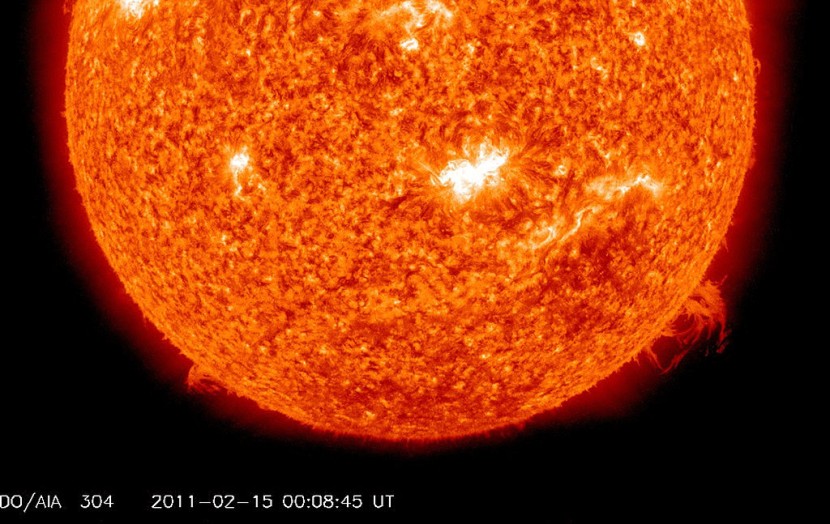NASA's Solar Dynamics Observatory captured an image of our sun emitting a powerful solar flare, peaking at 4:55 p.m. EST on Dec. 31, 2023.
Our solar system's star recorded The burst of energy as the strongest solar flare since 2017. These events are powerful energy explosions that can impact radio communications, electric power grids, and navigation signals and pose risks to spacecraft and astronauts.
Powerful Solar Flare

The recent flare was classified as an X5.0 burst, where X-class denotes the most intense flares while the number next to the letter provides more information about its strength. The National Oceanic and Atmospheric Administration's Space Weather Prediction Center provided more details about the solar flare.
The burst came from the same sun region that produced an X.2.8 solar flare on Dec. 14, 2023. The latest burst was also the largest one to be observed since Sept. 10, 2017, when an X8.2 explosion was recorded, as per SciTechDaily.
While low in confidence, modeling of the Coronal Mass Ejection (CME) related to this event determined the possibility of proximity shock influences near Earth as early as Jan. 2, 2024. It also noted that a G1 (Minor) geomagnetic storming watch valid Jan. 2 is in place in response.
Scientists describe solar flares as sudden and intense bursts of radiation that emanate from the sun's surface, typically near its sunspots. These events result from the release of magnetic energy stored in our star's atmosphere.
This energy heats the solar material to tens of millions of degrees, which causes it to emit gamma rays, X-rays, and ultraviolet radiation. Solar flares are classified into three categories based on their strength: C-class, M-class, and X-class.
The New Year's Eve solar flare is expected to reach our planet today and it could trigger a geomagnetic storm. According to Space, the energy burst was ejected into space and is the most powerful solar flare during the current solar cycle, which began in Dec. 2019.
Peak Solar Activity
During the peak of the sun's activity during its previous solar cycle, an X45 flare was seen erupting in 2003, which was the most powerful solar flare ever recorded. On the other hand, both B-class and C-class solar flares are too weak to affect people on Earth noticeably.
The current solar activity aligns with scientists' predictions that our sun will continue to be particularly active as it goes through its 11-year cycle. As the solar maximum draws near, more flares, CMEs, and subsequent geomagnetic storms are expected throughout the year.
Scientists need to conduct continuous monitoring and advanced modeling because these are crucial to providing timely alerts about the potential impacts of solar flares on our technological infrastructure. Furthermore, while the full impact of the latest CME remains to be seen, experts urge preparedness for potentially minor disruptions shortly, said India Today.
Astronomers also predict a solar maximum to hit sometime this year, and the peak is expected to be a powerful one if last year's intense solar activity is any indication.
© 2025 HNGN, All rights reserved. Do not reproduce without permission.








